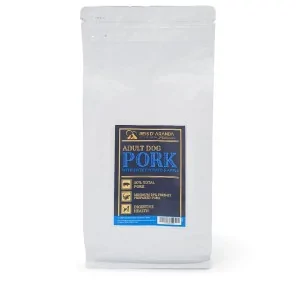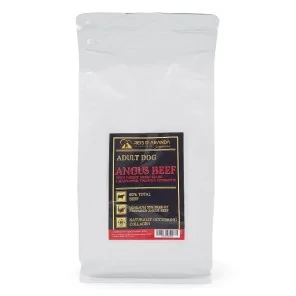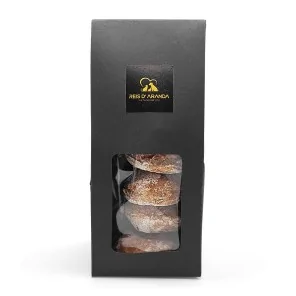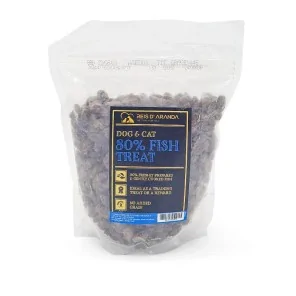The Tornjak originated from genetically homogeneous, almost extinct, indigenous shepherd dogs. These dogs have...
THE CAVALIER KING CHARLES SPANIEL
INTRODUCTION
The Cavalier King Charles Spaniel is a breed of small spaniel type dog originating in England, with an active and lively temperament. Its main function has been as a companion pet, which is shown in paintings from the 16th century. Sweet, cheerful and sociable the Cavalier is little known but in this article we will talk about him.
THE ORIGIN OF THE CAVALIER KING CHARLES SPANIEL
During the 16th century, a small type of spaniel was quite popular among the nobility of England. The people of that time believed that the dogs could keep fleas away, and some even believed that they could prevent stomach diseases. These dogs were sometimes called ‘gentle spaniels’ or ‘comforters’, and when ladies travelled in carriages during the winter, they carried a spaniel on their skirts to keep warm. Charles I kept a spaniel while he resided at Carisbrooke Castle, but it is with Charles II that the breed is closely associated. It used to be said of him, ‘His Majesty was seldom seen without his little dogs’. There was even a myth that he ordered a decree not to refuse entry to public places with spaniels.
During the reign of William III and Queen Mary II, the long-nosed style of spaniel went out of fashion. The Pug was the fashionable dog at that time in the Netherlands and due to William's Dutch origin, it became popular also in England. From crossbreeding with the Pug, or other flat-nosed breeds, would come some characteristics of the modern King Charles Spaniel. In 1852 William Youatt criticised the change in the breed: ‘The King Charles breed is at present materially altered. The muzzle is very short, and the forehead prominent, like that of the bulldog.
In the early 18th century, John Churchill, 1st Duke of Marlborough, owned a red and white hunting type of King Charles spaniel. He was named Blenheim, in honour of his victory at the Battle of Blenheim. It was because of him that the red and white haired variety of the King Charles Spaniel became known as Blenheim.
In the early 20th century attempts were made to revive the original King Charles Spaniel, with the now extinct Toy Spaniel Trawler. These attempts were documented by Judith Blunt-Lytton, Baroness Wentworth, in her work ‘Dogs and their Ancestors’ including the history and management of the Toy Spaniel, Pekingese, and Pomeranian, the book was published under the name of the Honourable Mrs. Neville Lytton in 1911.
THE STANDARD OF THE CAVALIER KING CHARLES SPANIEL
GENERAL APPEARANCE: Active, graceful and well balanced dog, with a kindly expression.
HEAD:
SKULL: Almost flat between the ears.
FRONTO-NASAL DEPRESSION (STOP): Shallow.
FACIAL REGION:
TRUFFLE: Well developed and black in colour, without flesh-coloured markings.
HOCOCO: The distance from the base of the fronto-nasal depression to the tip of the nose is 1 1/2 inches (3.8 cm). The muzzle tapers progressively towards the tip. The face is well filled under the eyes. Any hint of tapering is undesirable.
BELLIES : Well developed, but not pendulous.
JAWS / TEETH: Jaws strong, with perfect, regular and complete scissor bite, i.e. the inner side of the upper incisors in close contact with the outer side of the lower incisors; the teeth should be set square to the jaws.
EYES: Large, dark, round but not protruding, set wide apart.
EARS : Long, set on high and covered with abundant
Fringed hair.
NECK: Moderately long and slightly arched.
BODY
BACK: Level.
LOIN: Short.
CHEST: Moderately developed with well sprung ribs.
TAIL: The length of the tail should be in harmony with the body, well set on, carried gaily but never over the dorsal line. Its docking was formerly optional when not more than one third of the tail should be docked.
LIMBS
FORELEGS:
GENERAL APPEARANCE: Legs straight and moderately boned.
Shoulders: Well sloping.
HANDS / FOREQUARTERS FEET: Compact, with thick pads and well covered with long fringy hair.
HIND LEGS:
GENERAL APPEARANCE: Moderately developed bone.
KNEES: Well angulated.
HINDQUARTERS: Should not show any hint of cow or sickle shape.
FEET: Compact, thickly padded and well covered with long, flowing hair.
GAIT / MOVEMENT: Swift and elegant in movement with plenty of drive from the hindquarters. Seen from front or rear, forelegs and hindquarters move in a parallel plane.
COAT
HAIR: Long, silky and not curly. A slight wave is permitted. With plenty of feathering. Not to be trimmed at all.
COLOUR: The recognised colours are:
- BLACK AND FIRE: Brilliant black with tan markings over the eyes, on the cheeks, inside the ears, on the chest, on the limbs and on the underside of the tail. The tan colour must be bright. White patches are undesirable.
- RUBY: A uniform deep red colour. White patches are undesirable.
- BLENHEIM: Bright chestnut coloured patches well distributed on a white background. The markings should be evenly divided over the head, leaving a space between the ears for a highly prized white lozenge mark (a distinctive feature of the breed).
- TRICOLOUR: Black and white well spaced and evenly distributed, with tan markings on eyes, cheeks, inside of ears, inside of legs and on underside of tail.
Any other colour or other combination of colours is highly undesirable.
WEIGHT: 5.4 to 8 kg
A well balanced small dog between these weights is desirable.
FAULTS: Any departure from the foregoing points should be considered a fault and the seriousness with which the fault should be regarded should be in exact proportion to its degree and its effect upon the health and welfare of the dog.
DISQUALIFYING FAULTS:
- Aggressiveness or extreme shyness.
- Any dog showing clear signs of physical or behavioural abnormalities.
N.B.: Male dogs should have two apparently normal appearing testicles fully descended into the scrotum.
Only functionally and clinically healthy dogs of typical breed conformation should be used for breeding.
THE HEALTH OF THE CAVALIER KING CHARLES SPANIEL
The breed is prone to various diseases due to the fact that they all come from six unique dogs, but well bred and health tested before and after breeding (tracking) the chances of our cavalier king charles spaniel suffering from any of them are drastically reduced:
- MITRAL VALVE PROLAPSE (MVD): The mitral valve is a heart structure located in the left ventricle and is responsible for allowing blood to flow from the left atrium into the ventricle. By closing completely, it prevents the blood from flowing back into the atrium when the ventricle beats and allows it to have only one possible outlet in the aorta to be distributed throughout the body.
Mitral degenerative pathology occurs mainly in older small breeds. In this disease, thickening of the mitral valves occurs, which means that they do not close properly and leave a small hole through which, with each heartbeat, part of the blood that should leave the aorta returns to the left atrium. Our dog's body, on detecting this problem through different regulatory mechanisms, activates a series of ‘protective methods’ which, although they help in the short term, in the long term cause the pathology to become chronic and worsen.
- SYRINGOMYELIA (SM): S yringomyelia is a chronic neurological pathology in which ‘cysts’ develop in the spinal cord filled with cerebrospinal fluid, called syringes.
- HIP DYSPLASIA: Hip dysplasia is a multigenic and osteoarticular disease that can be hereditary and degenerative. Therefore, there may be different factors with which to try to predict whether the disease can be developed or not. It is necessary to bear in mind that, although it may be a hereditary disease, it does not always have to develop as it is possible that the dog will not transmit it to its descendants (many of them arise due to the presence of slippery floors and overweight during the dog's growth).
- Patellar luxation: Patellar luxation is one of the most common orthopaedic conditions in dogs and is diagnosed in 7% of puppies. The disease mainly affects small dogs, especially breeds such as boston and yorkshire terriers, chihuahuas, pomeranians and miniature poodles. The incidence in larger breeds has been increasing over the last ten years and breeds such as Chinese shar pei, smooth retriever, akita and Pyrenean mountain dog are now considered to be predisposed to the disease. Patellar luxation affects both knees in half of the cases, potentially leading to discomfort and loss of function. Patellar dislocation is occasionally caused by traumatic injury to the knee, resulting in sudden, severe limb lameness.
- CATARACTS: Cataracts in dogs are a loss of transparency of the lens that helps them to see better, i.e. loss of the crystalline lens. Due to the breakage of the crystalline tissue, the eyes become cloudy and cause blurred vision. It is essential to treat them as soon as possible because the more time passes, the more dense they become and the more likely it is that the canines will have a total loss of vision without the ability to recover it. There are several causes of cataract disease in dogs. One of them can be by nature or by the dog's old age, as we have already mentioned above, due to the rupture of the crystalline lens. But there are also other causes of cataracts in dogs, such as trauma, injury, inflammation of the eye or diabetes. However, the most common cause, or the one most commonly diagnosed, is hereditary cataracts. Age is not a determining factor in this cause as they can appear when the animal is young.
- RETINAL DYSPLASIA: Retinal dysplasia in canines . Retinal dysplasia or RD is a congenital anomaly that can cause visual impairment in dogs. Some dogs with this condition have no apparent symptoms, while severe cases of retinal dysplasia can cause visual impairment and eventually blindness. Owners should not breed dogs that carry the gene for retinal dysplasia, to avoid passing the condition on to their offspring.
- OTITIS: Otitis is a common inflammation of the ear canal, which can affect dogs and cats of all breeds and ages. Otitis can be painful and detecting it, recognising its symptoms and establishing treatment is essential to prevent it from becoming chronic and causing hearing loss.
This breed is not prone to oral problems (accumulation of tartar) but we must provide it with a good diet, they have a tendency to put on weight so to look after their weight and heart we can opt for high quality feed such as Reis d'Aranda Angus beef or Reis d'Aranda pork with sweet potato. As for brushing, he will need two or three brushings a week and monthly baths with high quality moisturising products.
THE CAVALIER KING CHARLES SPANIEL AS A PET
They are active due to their instinct to chase most things that move, including vehicles on busy streets, so it is recommended that they always be walked on a leash. They tend to regard all strangers as friends and do not usually fight with other dogs, members of this breed are generally not good watchdogs. As part of the Spaniel group they have a strong hunting instinct and can endanger birds and small animals. However, owners have reported that through positive reinforcement training their cavalier lives happily with a variety of small animals, including hamsters, gerbils and birds.
They are noble, friendly and willing to please most. As such, dogs of this breed are good with children and other dogs, as they are affectionate and show a patient nature. They are ideal small dogs for flat living. They are naturally curious and playful, but also enjoy simply lying on a cushion, making them excellent as a companion or lap dog to be with medical patients, the elderly or depressed.
CONCLUSION
The cavalier king charles spaniel is an adorable and playful breed ideal for families with children or the elderly, its affectionate personality makes it suitable to live with other pets and its care is relatively simple, so it is a wonderful breed to get started in the canine world.
Leave a comment
Log in to post comments
















